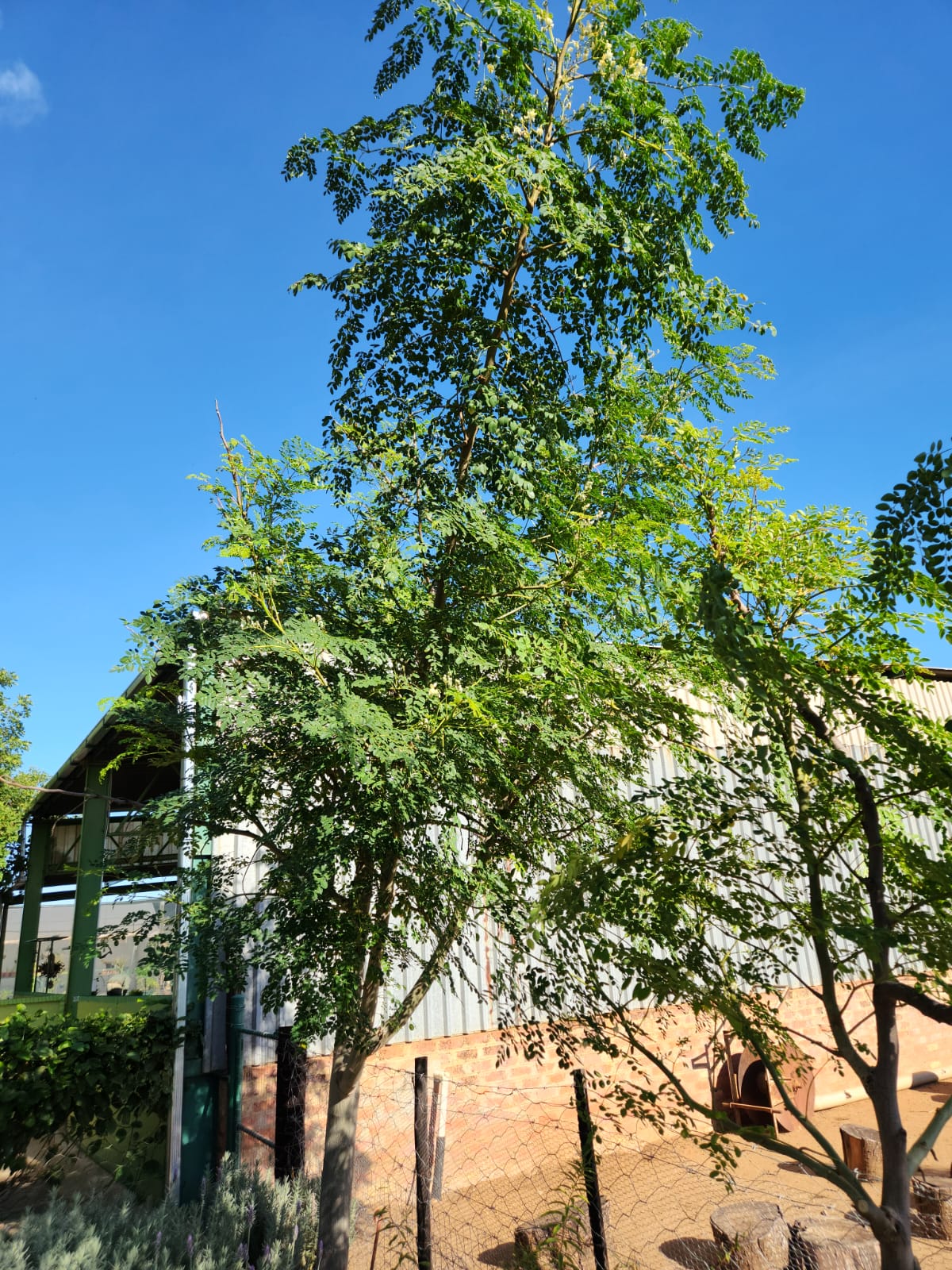Moringa (Sprokiesboom) #
Moringa ovalifolia

Quick Info #
- Distribution & habitat: Namibia to Angola – arid areas on rocky hillsides
- Family: Moringaceae
- Florescence: November to May
- Fruiting: October to May
- Leaf habit: deciduous
- Name origin: “ovalifolia” refers to the tree’s oval leaflets and “moringa” may be derived from the family name or a common name for the related horseradish tree
- Other names: African moringo, ghost tree, horseradish tree, meelsakboom, Oluhongwe (Ovambo), Omutindi (Herero), phantom tree
Description #
The moringa, considered a small bottle tree or tree-like shrub, is easily recognized by its squat, swollen, succulent trunk that reaches a metre in diameter. The resinous bark is smooth and pale-grey to whitish in colour, and the roots are fleshy.
The leaves form clusters at the ends of branches and are hairless. Large numbers of white flowers also grow together in panicles. The three-sided fruit is pod-like and hangs down loosely. It splits into three valves with a loudish pop, releasing winged seeds.
A forest filled with moringas, known as the Fairy Tale Forest or “Sprokieswoud”, is found in Etosha National Park.
Uses & Ecology #
The root is edible, with a horseradish-like flavour when raw. The leaves and fruit can also be eaten.
References #
- Fern, K. (2025) Moringa ovalifolia. Available at: https://tropical.theferns.info/viewtropical.php?id=Moringa+ovalifolia (Accessed: 7 November 2025)
- iNaturalist, (n.d.) African Moringa (Moringa ovalifolia). Available at: https://www.inaturalist.org/taxa/431337-Moringa-ovalifolia (Accessed: 7 November 2025)
- Van Jaarsveld, E. (2007) Moringa ovalifolia. Available at: https://pza.sanbi.org/moringa-ovalifolia (Accessed: 7 November 2025)
- Van Wyk, B & P. (1997) Field Guide to Trees of Southern Africa. Cape Town: Struik Publishers.
- Weidlich, B. (2022) The Moringa is a Tree Full of Wonders. Available at: https://namibian.org/news/nature-and-environment/the-moringa-is-a-tree-full-of-wonders (Accessed: 7 November 2025)
Caution: Consult a qualified health practitioner before considering medically using or ingesting any plant parts. Any mentioned traditional uses are based on cultural practices and anecdotal evidence. They are not necessarily clinically proven or supported by modern scientific studies.